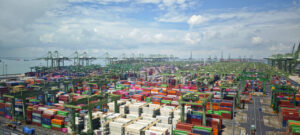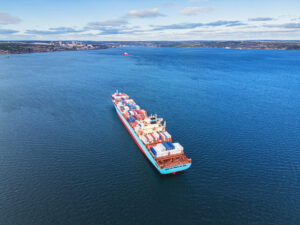The Aqaba Container Terminal in Jordan, operated by APM Terminals. Image courtesy of APM Terminals.
New pre-arrival clearance protocols and reduce terminal handling charges for containers have made Jordan’s deep-water Aqaba Container Terminal (ACT) on the Red Sea a strong contender as an alternative gateway for Iraq’s cargo, APM Terminals have stated.
With the change in pre-arrival clearance protocols, containers will no longer need to be trans-loaded onto new trucks when crossing the Jordanian/Iraqi border.
ACT Managing Director, Steven Yoogalingam, commented: “The Aqaba Container Terminal has been working hard over the years to develop a competitive gateway to Iraq.
“This will enhance the already strong Iraqi port system and gives the business communities of both countries a fantastic transportation system to better support economic development in the region.”
This development comes as the volume of Iraqi imports has seen rapid growth, rising 86% last year alone to reach a total value of $36.5 billion.
The ACT is located 550km from the Iraqi border town of Trilbil, approximately 36 hours via road, and 48 hours via road from Baghdad.
Read the latest technical paper on green operations for ports — “Energy Peak Shavings for Ship-to-Shore Cranes”
The terminal has also recently become connected with the Asian market with the new AR1 direct service, jointly operated by Wan Hai and shipping group THE Alliance — consisting of Hapag-Lloyd, Yang Ming and ONE.
YML Agent, Mohannad Al Bataineh, said: “We chose Aqaba as the latest addition to our route due to the high potential of the terminal, and its strategic location within the region.
“We are impressed with the advanced technologies and handling procedures available at the Aqaba Container Terminal.
“This new destination will undoubtedly contribute to the expansion of our routes and operations and we are confident that Aqaba will be another success for our services worldwide.”
The ACT has been increasing its vessel capacity over recent years — with its maximum capacity being 5,500 TEU in 2014 to more than 14,500 TEU today.








